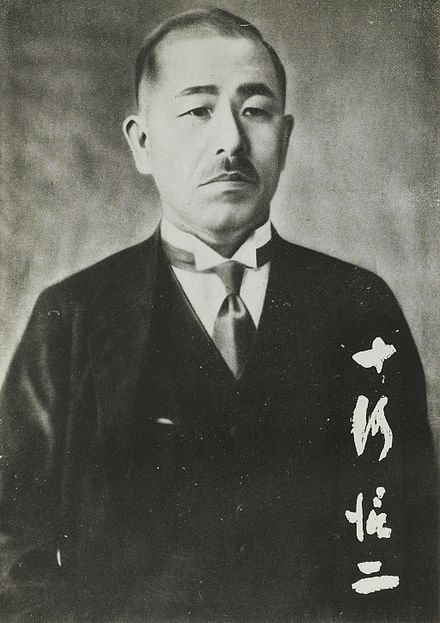
How Best to Carry Out Bureaucratic Leadership in Marketing
Last update: 20 December 2022 at 03:11 pm
A Bureaucratic Leadership management approach is still used by many significant businesses today. This leadership style may have a significant influence if you are dealing with a highly regulated corporate environment. It is also particularly effective in organizations that do not demand a lot of invention or originality from their staff.
In this bureaucratic leadership guide, we will explore bureaucratic leadership components such as established official tasks, the hierarchy of power, technical competence, system regulations, as well as instances and drawbacks of this form of leadership and how to apply it in a marketing context.
What Is Bureaucratic Leadership?
Bureaucratic leadership is all about a crystal-clear line of command, stringent regulations, and compliance and is based on the full chain of command rather than a single leader.
The bureaucratic leadership pattern focuses on an organization’s administrative demands.
This management method is used by teams and departments in both the private and governmental sectors. However, it is largely utilized in the public sector, which depends significantly on consistency and adherence to rules and regulations to achieve the desired results.
Some Other Leadership Styles
Leaders do not all have the same attitude or outlook. As previously said, few leaders use the carrot strategy, while others use the stick approach.

The type of individuals with whom the leader interacts and deals determines the leader’s leadership style. Some of the different leadership styles are:
Autocratic Leadership Style
In this leadership style, the leader has total control and authority over their employees/entire team. The team cannot express their opinions, even if they are in the best interests of the team member or the business.
They are not allowed to criticize or challenge the leader’s methods of getting things done. The tasks are completed by the commander himself.
The “Laissez-Faire” Leadership Style
In this case, the leader completely trusts their employees/team to do the work on their own. He/She just focuses on the intellectual/rational aspects of his work and sets aside the managerial aspects of his career.
The team/employees are encouraged to offer their perspectives and make ideas that are best for the organization’s interests. This leadership approach is only effective when the personnel are knowledgeable, loyal, experienced, and intelligent.
Democratic/Participative Leadership Style
Leaders invite and encourage team members to play a major role in decision-making, even though the ultimate decision-making authority resides with the leader.
The leader instructs the workers on what to do and how to do it, while the employees convey their experiences and recommendations to the leader.

Brands That Leverage Bureaucratic Leadership For Marketing
When it comes to marketing brands, it is seemingly difficult on the surface to find examples of bureaucratic leadership but it is a widespread phenomenon in the business world.
The reason behind it is that bureaucratic leadership in marketing runs faceless. We can only see a brand becoming successful in staying in limelight without a human face.
Cisco, for example, doesn’t engage in person-based branding but has an active social media presence that stays relevant to all the latest developments. Apple, too, transitioned its marketing style after the demise of Steve Jobs while Publicis Groupe, the global market leader in advertising and PR successfully delivers results for numerous brands.
If you require any help with your marketing efforts, take a look at some qualified digital marketing agencies that can help you make the most out of your company.
Advantages Of Bureaucratic Leadership
Here are some advantages of bureaucratic leadership:
Job And Relationship Separation
Bureaucratic leaders place a premium on adhering to tried-and-true processes and protocols. The method and outcomes are more important than the connection.
Because of this impersonal attitude, relationships do not obscure the team’s capacity to deliver goals. Favoritism is unusual. This emphasis on procedure and outcome is also typical in transactional leadership, which is, to some extent, a contemporary form of bureaucratic leadership.
Every person is employed in large organizations as a specialist to do certain activities in a specified capacity. In the event of a staff shortage, individuals may be required to perform various responsibilities. However, the basic guideline is that staff’s main focus should be on their particular jobs. Maintaining a decisive plan scope also makes it easier for management to conduct performance evaluations.
Disadvantages of Bureaucratic Leadership
Here are some disadvantages of bureaucratic leadership.
Creativity Is Constrained
Team members must do duties by the organization’s and its policies. This commitment to norms considerably stifles innovation since thinking outside the box is frowned upon.
Productivity declines when team members spend more time attempting to satisfy standards rather than brainstorming innovative ways to accomplish their duties better, smarter, and faster. This lack of flexibility and repression of creativity can hurt team morale and result in significant staff turnover.
Discouragement Of Competition
Team members’ scope is limited by clearly defined responsibilities. Each group member is required to specialize and stay within the scope of the task.
The only way to compete and grow in your job is to satisfy the prerequisites for moving up the career ladder. Daily activities are centered on adhering to a schedule; deviating from this pattern is discouraged and frowned upon.
Examples of Bureaucratic Leadership
As the term implies, the bureaucratic style of leadership is rigidly concentrated on a structure and relies heavily on a framework to support its function. Many other leadership styles like charismatic leadership cannot be replicated while the framework of the bureaucratic management system is simple to follow.
Here are a few examples of leaders with exclusively bureaucratic leadership styles
Winston Churchill

During his time as a leader, Winston Churchill demonstrated Bureaucratic Leadership. He was a British Prime Minister who is credited with guiding Britain to victory in the second world war.
He had considerable charismatic authority as a leader and a systematic framework in place to guarantee that individuals completed their responsibilities as intended.
Churchill was a determined leader who was notoriously tough to persuade. He showed tenacity at all levels in sticking to his ideas in the face of adversity. He devised the strategy that enabled Britain to defeat its adversaries during the war.
Churchill is also a detail-oriented, strict adherence and careful leader, which are characteristics shared by bureaucrats. He was very curious about what was going on in the government and military actions on the battlefield, especially during the war.
Alfred P. Sloan

Alfred Sloan is another example of a bureaucratic leader from the early 1920s. The American businessman was elected President of General Motors, and the firm altered its approach to command and management under his command. He not only changed the way the company was run, but he also had an impact on the whole industry.
Sloan approached development and invention with realism. He saw the importance, but he also wanted to focus on giving people things they liked that were also practical.
Shinji Sogō

Shinji Sogō, the fourth president of Japanese National Railways (JNR), is a prime example of a bureaucratic leader revolutionizing his organization.
It is because of him that the dangan ressha (or “bullet train”), which was previously seen as an ambitious and maybe impossible project, came to completion. Through tenacity, rigorous control of the JNR, and a calculated efficiency from the project’s start to its conclusion, the dream of the train was able to emerge as a reality.
The concept was significant to Sogō because, despite criticism from inside the firm and the larger general industry, he insisted on adopting a standard gauge railway system. But, backed by his views and remarkable engineering, he prepared a proposal to propose to the Japanese government and was successful in obtaining funds for the project.
History Of Bureaucratic Leadership Style
The phrase was initially used in France in the mid-18th century, although the usage of a bureaucratic system dates back far longer. The French word bureau i.e. desk or office is the origin of the word “bureaucracy.”
The systematic application of the administrative system, which is essentially what bureaucracy is, may be traced back to Ancient Egypt. Ancient Chinese culture also built a bureaucratic structure, which was partly based on Confucius’ teachings, who believed in the value of ceremonies.
It has been characterized, three essential features have remained at the heart of bureaucracy. They are as follows:
Officialism – The systems demonstrate a lack of adaptability and initiative.
Redtape – There is a high level of compliance with regulations and procedures.
Proliferation – The systems tend to spread quickly.
Despite its negative connotation, bureaucracy has historically played a crucial role in the functioning of civilizations. The bureaucratic style has undergone many iterations throughout history. Perhaps theorizing bureaucracy was virtually unavoidable.
The Beginning
Max Weber, the sociologist who also devised the concept of transactional leadership, created the theory behind bureaucratic leadership. He grew up amid an era of industrialization and witnessed society’s shift toward greater institutions, from massive factories to expansive farms.
He developed this idea in response to the rising need for a more efficient method for running these institutions, which had previously relied on favoritism. Weber’s theory of bureaucratic leadership is founded on six fundamental tenets:
1. Authority structure. There is a chain of command, with duties and expectations established at each level of authority.
2. Task specialization/division of labor. This direction style focuses on putting the best person in the best place.
3. Formal choice. Employees are hired, dismissed, and promoted depending on their experience, performance, continuous development, and regulatory compliance.
4. Career aspirations. Every employee has the chance for a long-term career if they follow the rules and perform properly.
5. Regulations and rules. To sustain structure inside the company, the system requires a specified set of rules, regulations, and processes.
6. Impersonality. The primary emphasis is on the organization and its success, rather than on individual contributions.
Summing Up
Bureaucratic leadership has been a favored method of organizing societies for a long, and with Weber’s theorizing, the framework became a popular choice for business executives as well.
Nonetheless, the approach has a poor reputation, which is generally caused by inefficiently performed systems. Bureaucratic leadership style may be dull and arduous, with workers under pressure scrupulously adhering to the rules. Under the structure, there may be a loss of innovation and a lack of subordinate empowerment. It’s a technique to consider if you’re heading a team of novice employees and require regularity and dependability and legitimate power.







